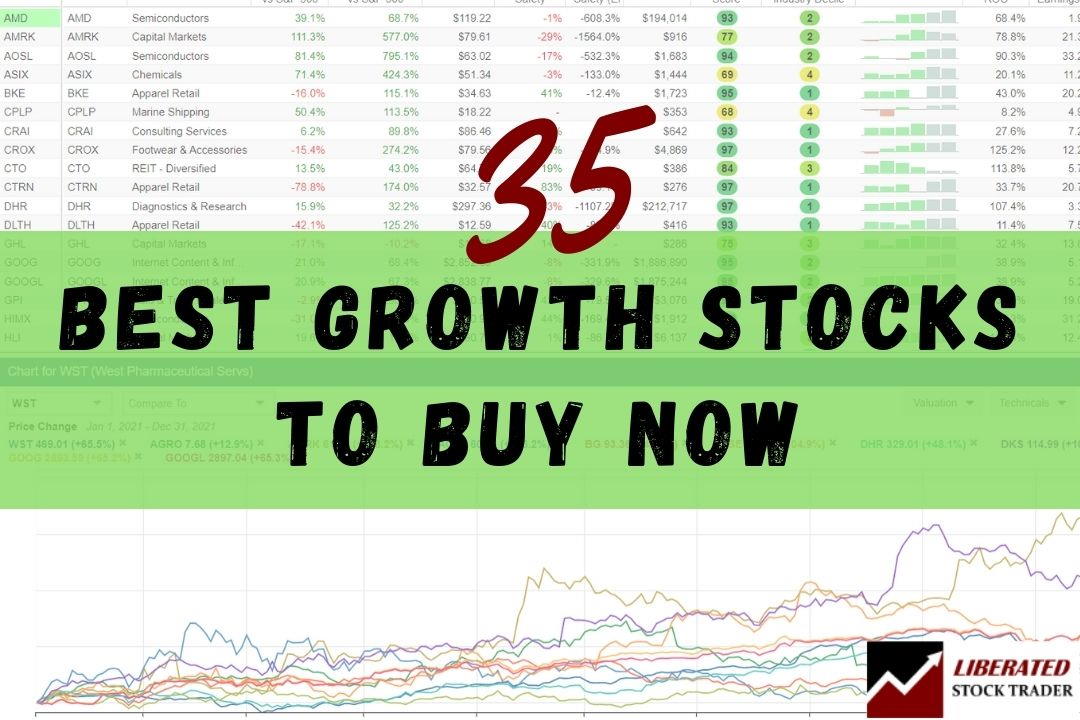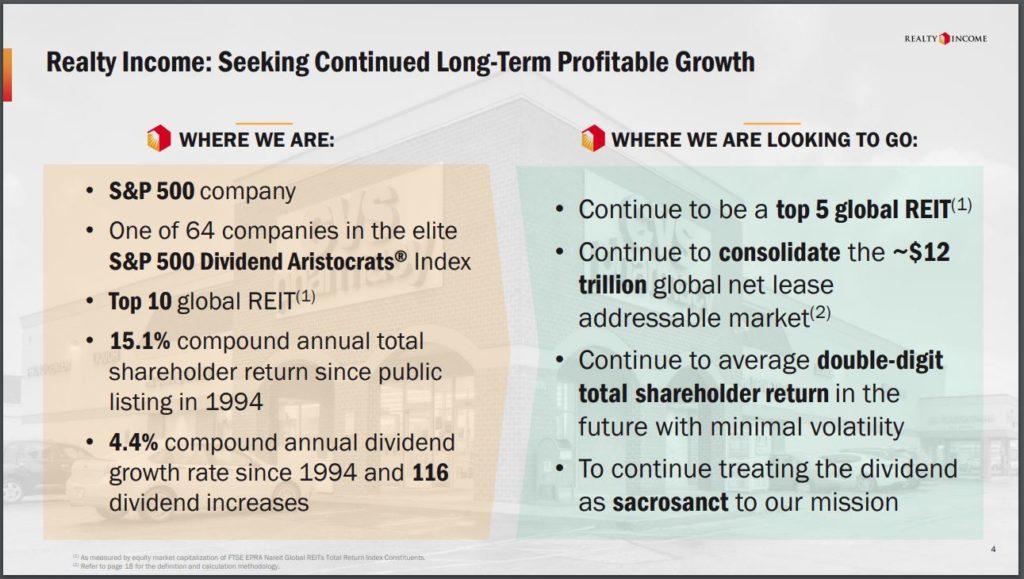Delving into best growth stocks to buy now, this introduction immerses readers in a unique and compelling narrative, with a casual formal language style that is engaging and thought-provoking from the very first sentence.
As we navigate through the world of investments, the quest for the best growth stocks to buy now becomes paramount. Understanding the intricacies and nuances of these stocks can lead to lucrative opportunities in the market.
Understanding Growth Stocks

In the world of investments, growth stocks refer to shares of companies that have the potential to grow at a rate significantly above average compared to other companies in the market. These stocks typically do not pay dividends, as the companies reinvest their profits back into the business to fuel expansion and growth.
The characteristics that make a stock a good candidate for growth include strong revenue and earnings growth, a competitive advantage in the market, innovative products or services, and a solid track record of performance. Investors are attracted to growth stocks for their potential to deliver high returns over time, although they also come with higher risk due to market volatility.
Examples of Well-Known Growth Stocks
- Amazon (AMZN): With its diverse range of products and services, Amazon has shown consistent revenue growth and market dominance, making it a popular choice among growth investors.
- Tesla (TSLA): Known for its innovative electric vehicles and energy solutions, Tesla has experienced rapid growth in recent years, attracting investors looking for exposure to the future of transportation and sustainable energy.
- Netflix (NFLX): As a pioneer in the streaming industry, Netflix continues to expand its subscriber base globally and invest in original content, positioning itself as a top growth stock in the entertainment sector.
Factors to Consider When Choosing Growth Stocks

When selecting growth stocks to invest in, there are several key factors that investors should carefully analyze to ensure they are making informed decisions and maximizing their potential returns. Evaluating a company's growth potential, considering various metrics, and comparing opportunities across different industries are crucial steps in the decision-making process.
Key Metrics to Analyze
- Revenue Growth: Look for companies with consistent revenue growth over time, indicating a strong demand for their products or services.
- Earnings Growth: Analyze the company's earnings growth rate, as it reflects profitability and efficiency in operations.
- Price-to-Earnings (P/E) Ratio: Consider the P/E ratio to determine if the stock is undervalued or overvalued compared to its earnings potential.
- Return on Equity (ROE): Evaluate the company's ROE to assess how effectively it is generating profits from shareholders' equity.
Evaluating a Company's Growth Potential
- Market Size and Opportunity: Assess the company's target market and growth potential within it, considering competition and market trends.
- Innovation and Product Development: Look for companies that are investing in research and development to drive future growth through new products or services.
- Management Team: Evaluate the leadership of the company and their track record in executing growth strategies effectively.
Comparing Industries and Sectors
- Tech Sector: Technology companies often offer high growth potential due to innovation and changing consumer behavior.
- Healthcare Sector: Healthcare companies can provide growth opportunities with advancements in medical technology and an aging population.
- Renewable Energy Sector: Companies in renewable energy are positioned for growth as the world shifts towards sustainability and green energy solutions.
Researching Growth Stocks
Researching growth stocks is crucial to making informed investment decisions. By utilizing various strategies and conducting thorough research, investors can identify potential opportunities and build a strong growth stock portfolio.
Utilizing Online Resources
One effective strategy for finding information about potential growth stocks is to utilize online resources such as financial news websites, investment research platforms, and stock market analysis tools. These sources can provide valuable insights into market trends, company performance, and growth potential.
Conducting Thorough Research
Before investing in a growth stock, it is essential to conduct thorough research to evaluate the company's financial health, market position, growth prospects, and competitive landscape. Analyzing financial statements, earnings reports, and industry trends can help investors make informed decisions.
The Importance of Diversification
Diversification is key when building a growth stock portfolio to mitigate risk and optimize returns. By investing in a diverse range of growth stocks across different industries and sectors, investors can reduce the impact of market volatility and ensure a more balanced portfolio.
Managing Risk with Growth Stocks
Investing in growth stocks can offer significant returns, but it also comes with its own set of risks. It is crucial for investors to understand these risks and implement strategies to mitigate them effectively. Let's explore common risks associated with growth stocks and how to manage them.
Identifying Common Risks
- Market Volatility: Growth stocks are often more sensitive to market fluctuations, which can lead to rapid price changes.
- Company-Specific Risks: Growth companies may face challenges such as competition, regulatory changes, or management issues.
- Valuation Risk: Growth stocks can be overvalued, leading to a potential price correction.
Strategies for Risk Mitigation
- Diversification: Spread investments across different sectors and asset classes to reduce risk exposure.
- Research and Due Diligence: Conduct thorough research on companies before investing to understand their growth potential and risks.
- Setting Stop-Loss Orders: Implement stop-loss orders to automatically sell a stock if it reaches a predetermined price, limiting potential losses.
Portfolio Balancing with Growth Stocks
- Blend of Growth and Value Stocks: Balancing a portfolio with both growth and value stocks can help mitigate risk by diversifying across different investment styles.
- Asset Allocation: Determine the percentage of your portfolio allocated to growth stocks based on your risk tolerance and investment goals.
- Regular Monitoring: Continuously monitor the performance of your growth stocks and make adjustments as needed to maintain a balanced portfolio.
End of Discussion

In conclusion, the journey of discovering the best growth stocks to buy now is a dynamic and ever-evolving process. By staying informed, conducting thorough research, and managing risks effectively, investors can position themselves for success in the realm of growth stocks.
Questions Often Asked
What are growth stocks?
Growth stocks are shares in a company that is expected to grow at an above-average rate compared to other firms in the market. These companies typically reinvest their earnings for expansion rather than paying dividends.
How can investors evaluate a company's growth potential?
Investors can assess a company's growth potential by analyzing factors such as revenue growth, earnings growth, market share, and industry trends. Conducting thorough research and studying financial statements can provide valuable insights.
Why is diversification important when investing in growth stocks?
Diversification helps spread risk across different assets, reducing the impact of a potential decline in any single investment. By diversifying a growth stock portfolio across various industries and sectors, investors can safeguard their capital.
How can investors mitigate risks associated with growth stocks?
Investors can mitigate risks with growth stocks by diversifying their portfolios, setting stop-loss orders, and conducting regular reviews of their investments. It's also crucial to stay updated on market trends and company performance.





